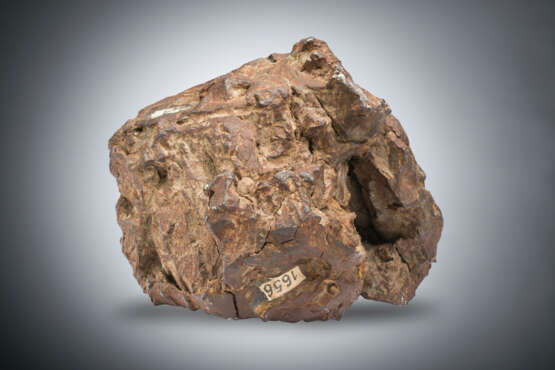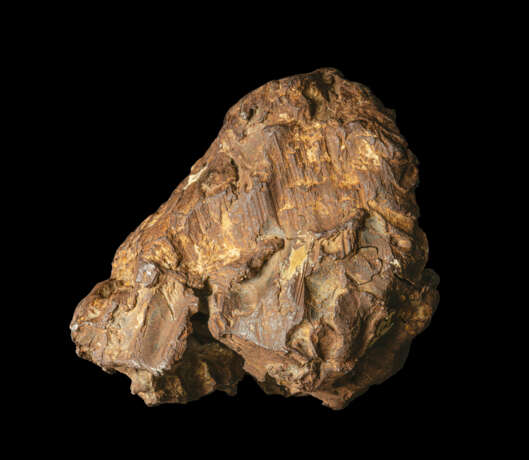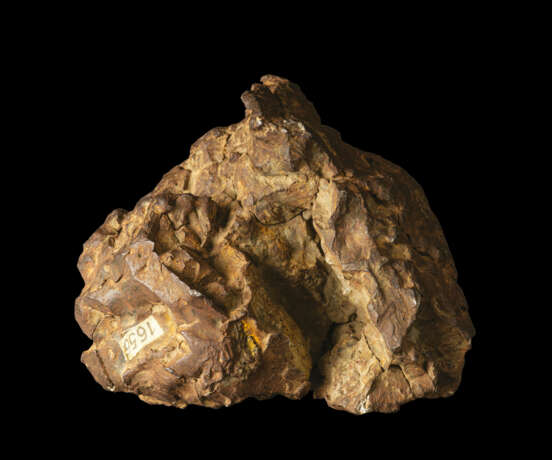ID 737499
Los 10 | ORIENTED SIKHOTE-ALIN METEORITE
Schätzwert
£ 30 000 – 50 000
After breaking off its parent asteroid 320 million years ago, a massive iron mass wandered through interplanetary space until a close encounter with Earth on 12 February 1947. A fireball brighter than the Sun (it created moving shadows in broad daylight) was seen to explode at an altitude of about 6 km over eastern Siberia. Sonic booms were heard at distances up to 300 km from the point of impact. Chimneys collapsed, windows shattered and trees were uprooted. A 33-km-long smoke trail persisted for several hours in the atmosphere after impact. Iron fragments were scattered over a broad elliptical area. Many of the meteorites penetrated the soil, producing impact craters up to 26 meters across; about 200 such depressions have been catalogued. A famous painting of the event by artist and eye-witness P. I. Medvedev was reproduced as a postage stamp issued by the Soviet government in 1957 to commemorate the impact’s 10th anniversary.
Unlike 99% of all meteorites, this specimen experienced a minimal amount of tumbling during its plunge through our atmosphere. This will only occur when there is a fortuitous distribution of the meteorite’s mass as well as a serendipitous angle of atmospheric entry. As a result of maintaining the same axis of orientation during its descent, such meteorites gain a wonderful aesthetic appearance and their direction of flight is readily discerned. The parabolic face now seen was, in effect, carved by frictional heating as this meteorite plunged through Earth’s atmosphere. The curvature of this parabola is the precise angle at which heat is most efficiently deflected from any object that penetrates the atmosphere — and this same curvature seen in oriented meteorites inspired the design of the heat shields for NASA’s Mercury, Gemini and Apollo capsules.
Christie's would like to thank Dr. Alan E. Rubin at the Department of Earth, Planetary, and Space Sciences, University of California, Los Angeles for his assistance in preparing this catalogue.
160 mm x 150 mm x 150 mm (61/4 x 5 x 5 in.)
9kg.
| Adresse der Versteigerung |
CHRISTIE'S 8 King Street, St. James's SW1Y 6QT London Vereinigtes Königreich | |
|---|---|---|
| Vorschau |
| |
| Telefon | +44 (0)20 7839 9060 | |
| Aufgeld | see on Website | |
| Nutzungsbedingungen | Nutzungsbedingungen |






